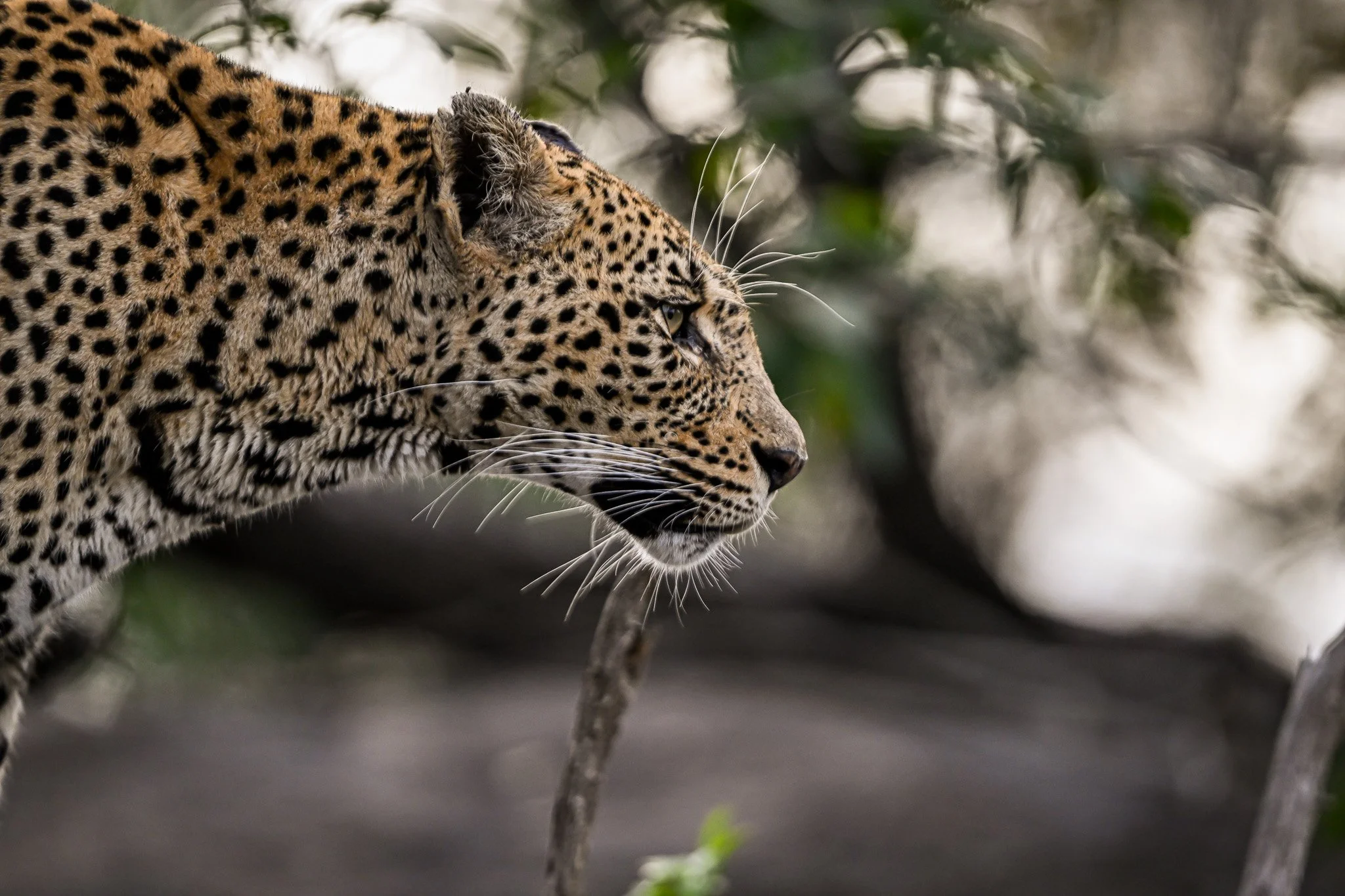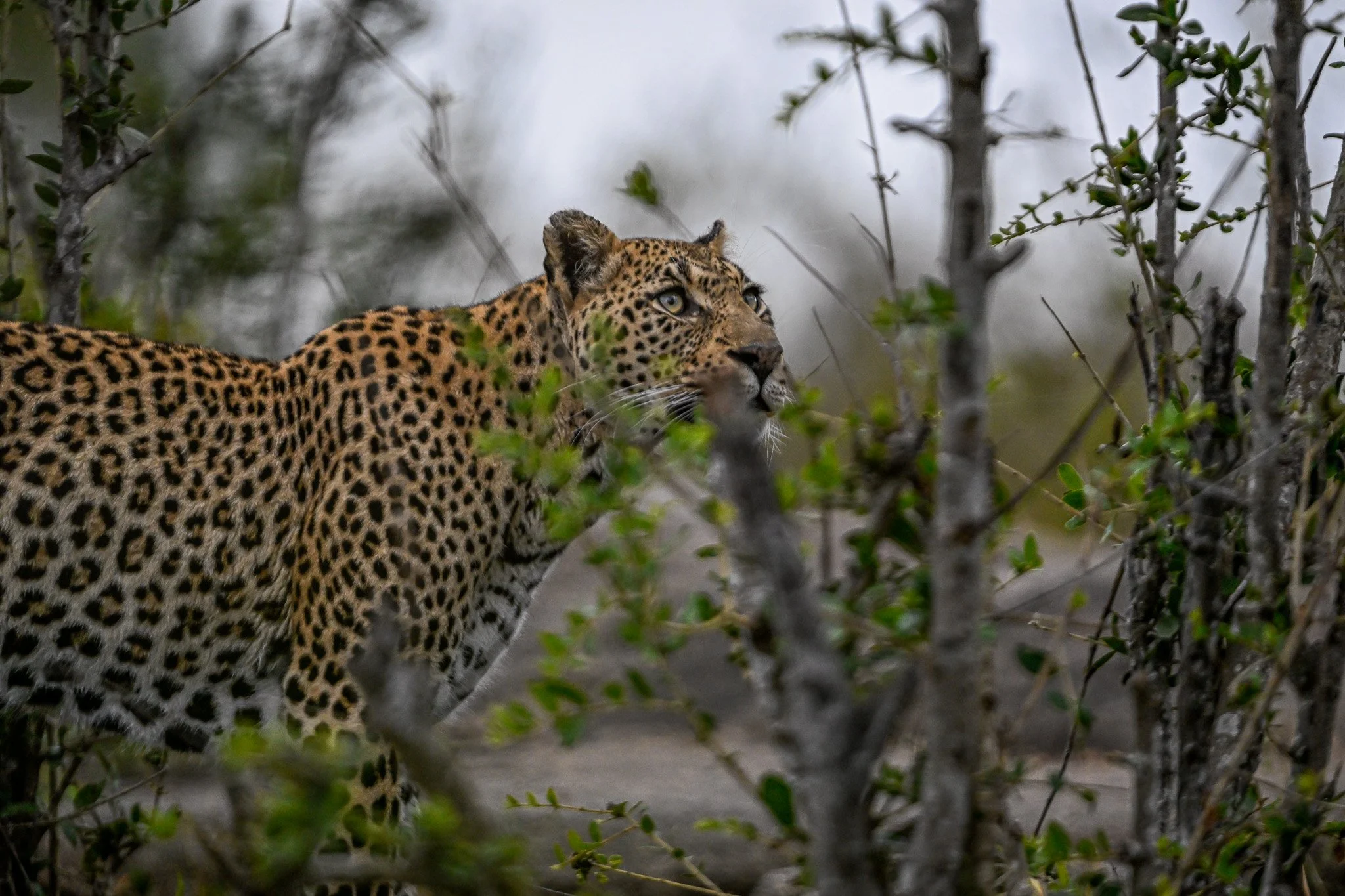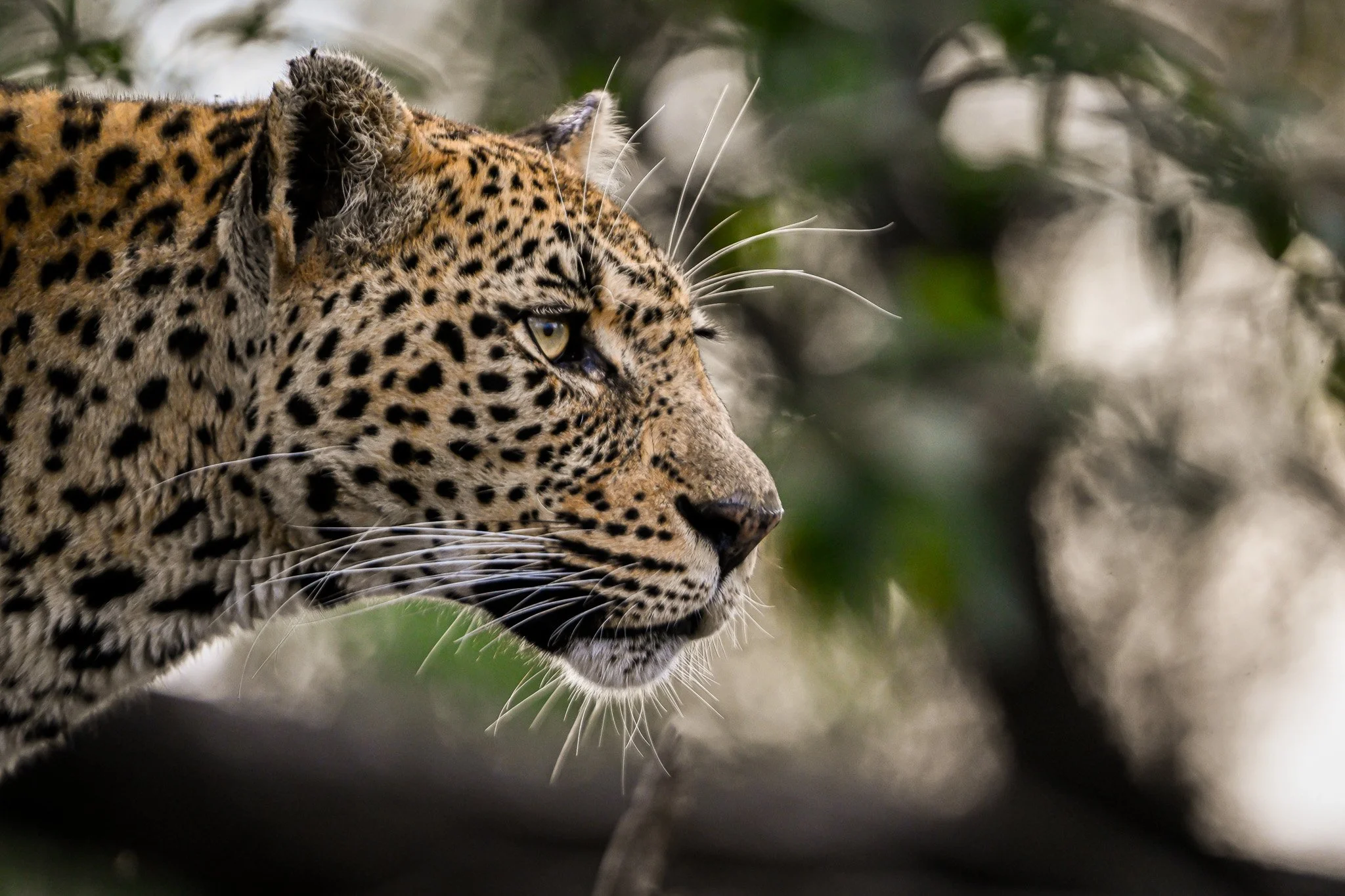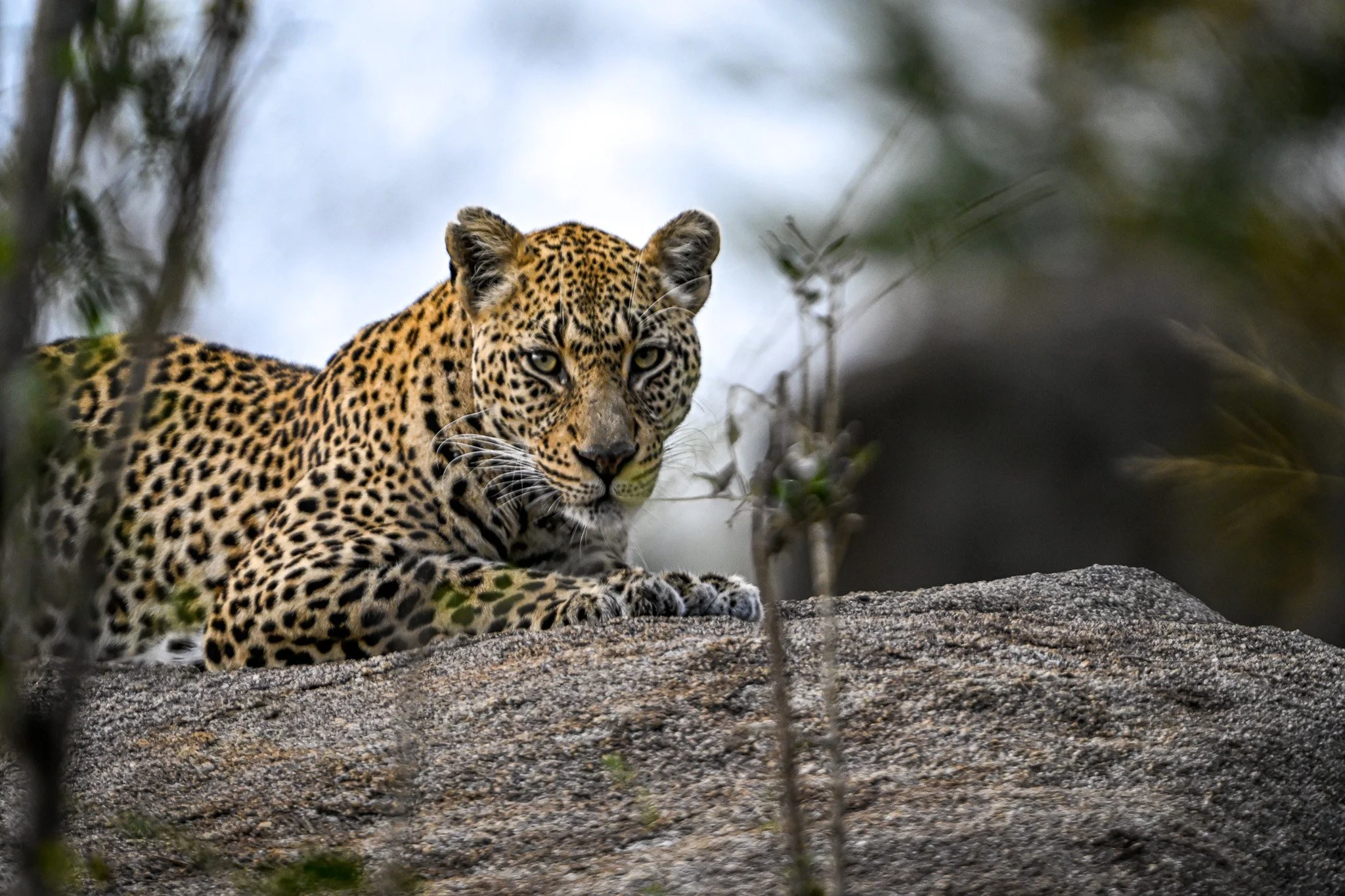Leopards in Mala Mala
Powerful, stealthy, and infamously elusive. The leopard is one of the most difficult species to spot on safari. They are solitary animals, predominantly nocturnal, and that unmistakable coat is perfect camouflage in the dense African bush. Despite never having a great sighting in my many African adventures, they remain my favorite species with their strong stature and intense stare. Yearning for a more intimate leopard encounter this trip, my dad and I journeyed to Mala Mala, a private game reserve within Sabi Sands, recognized for its substantial leopard population.
Leopards tend to be nomadic, which contributes to the challenge of finding them. They are regularly on the move within a defined range, excluding mothers, who are forced to abandon this nomadic lifestyle whilst their offspring are too young to accompany them. Rather than risking the safety of the kin, they’ll utilize den sites that offer protection to the cubs, often inaccessible to threats. These sites may look like hidden rock clefts, fallen trees, or even termite mounds. This den isn’t exactly “home”; the mother will hide the cubs in different concealed locations, moving from one safe space to the next, until they are strong enough to travel with her (usually around three months of age).
We were the first vehicle out before sunrise. Our ranger, Jaco, was unparalleled in his effort to show us all Mala Mala had to offer. No one drives a Land Rover quite like Jaco; he maneuvers through the overgrown African thicket with intention and ease. When we pulled into the forest, he began to slow, gently passing us branches overhead that would have otherwise taken us out. Every now and then, he’d accelerate allowing the vehicle to proceed haphazardly over the ground, heavily ornamented with bulky rocks and fallen branches.
The mother and cub were last seen together the previous day at the den site where we were headed. Trees towered high over the rock formation where the cub would be tucked away. As we waited quietly by the den with our eyes and ears peeled, the sun began to poke through the clouded sky. The woodlands were foggy from the rain that had showered the reserve before dawn, and while our visibility was hindered from the abundance of trees surrounding us, even the slightest sound was amplified.
Jaco perked up at the muffled sound of a distant, raspy cough. The noise was repeated every few seconds – a contact call. Leopards have distinctive calls, allowing the mother to communicate to her cub that she is returning to the den. Off to our left, she emerged from the woods – a strong figure moving slowly with her head held low. She continued to chuff as she passed in front of the truck, leaping onto a boulder just feet away from us. She scanned the site, as her calls got progressively louder.
Moments later, it became clear that this nine-year-old female was beginning to worry. Leopards are typically wary of their volume as to not expose their location to others, but this agitated mom didn’t seem concerned about her vociferous calls. The panic in her eyes exposed her realization…
Young leopards are notoriously inquisitive, and this particular cub had a reputation for being adventurous and wandering outside the den while his mom was gone. Mothers may leave the den site for up to two days. This time can be used to find food and patrol the land, while also allowing them to keep active and stay fit, ensuring their cubs have the best chance of survival.
As previously mentioned, it had down-poured that morning before we left camp. On our way to the den, we followed male leopard tracks that were shaped after the rainfall. This male was not the cub’s father, which may indicate trouble for the young leopard.
Each individual has a home range, marked by urine and claw marks on tree bark. Males have a larger home territory that will often overlap with the range of several females. Known for being territorial creatures, leopards will often fight to defend their terrain against individuals of the same sex. Because we trailed the male’s tracks to the site of the den, it is likely that he came across the cub, who was not his kin, and committed infanticide. This is a relatively common reproductive strategy that polygamous mammals may engage in, in the interest of eliminating the offspring of competing males.
Unfortunately, only about one-fifth of leopard cubs make it to adulthood in this area. Knowing this, we sat in the Land Rover without a sound as the grieving mother continued to cry out, wandering out of the den site and through the woodland trees. She briefly stopped at a branch, catching her breath and stretching her legs before continuing. Something told me she wasn’t ready to give up just yet.
Although this story is somber, I feel it's important to share. Leopards are the strongest cats in Africa, capable of carrying three times their body weight and hauling hundred-pound carcasses up trees. Regardless, sometimes the strongest animals are the most vulnerable.




